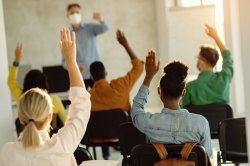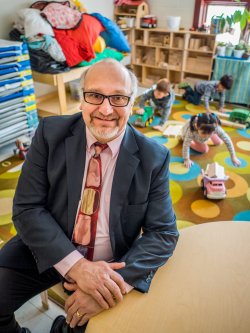Forget What You’ve Heard About ‘Learning Loss’
It’s not helpful or accurate to approach the return to school as “catching up”
Posted in: Education, Faculty Voices

Students are expected back for full-time, in-person instruction in K-12 schools this fall, and as they’re welcomed back into the classroom, school districts will have to identify and prepare for new challenges. Here, two Montclair State education experts weigh in on the narrative that students returning to in-person learning will have to overcome a “learning loss” due to the challenges of virtual classrooms. Districts, our experts say, should instead focus on other ways to help set their students and staff up for success.

Susan Baglieri, associate professor of Teaching and Learning and expert in disability studies and inclusive education
Schools should not be thinking about the “learning loss” narrative. Students with disabilities are often characterized as being “behind level” generally and are then treated accordingly, to their detriment. Learners start learning from exactly where they are – cognitively, emotionally and physically – no matter what has or hasn’t happened before that moment in time. The idea that students are behind is more likely to lead to emphasis on skills and the possible reduction of other enriching parts of the school day.
Teachers know what they are doing, and should be empowered to have space and time to get to know their students this September – and then adjust their pacing, curriculum and strategies accordingly. Some students will have enjoyed learning independently and having their own place and quiet, whereas others will have missed the social interaction and group environment. So, aiming to create spaces for both in the course of the day will be important to welcoming all back.
Schools should also be sensitive to the loss that students, teachers, staff, and communities have experienced in the past year, and must be mindful that trauma will be close to many. A message that things are “back to normal” can be triggering for some whose lives have been changed by loss.

Gerard Costa, director of the Center for Autism and Early Childhood Mental Health
Before teachers can teach and children can learn, their stress systems need to be addressed. During COVID, children and staff suffered illness, loss, and felt more isolated. The first thing that staff and children need is the chance to “tell their story,” about what has happened in their lives and how they are feeling.
Then, reframe “learning loss” as “pause and return.” It is neither helpful nor accurate to approach the return to in-person learning as “catching up.” If a person missed meals for seven days, we would not feed that person 21 meals on day eight to catch up. We refer to this as the “magic power” of teachers, in that they do best when they look at where the child is and plan their engagement and instruction based on the present.
Teachers are feeling so much pressure to meet the full curriculum standards and, as a field, the developmental, educational and mental health professionals need to work together to ensure that children are first helped to feel safe, calm and secure, and not rushed. Connect with the right side of the brain (feelings and safety) before you work on the left side of the brain (language and learning). Both sides are needed for learning – but the right side develops first, and under stress, it needs the most attention.
To speak with one of our education experts, contact Montclair State University Media Relations.
